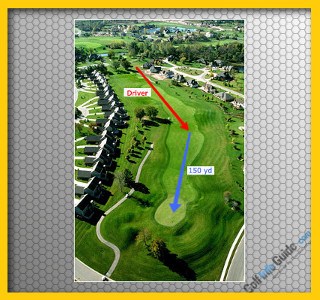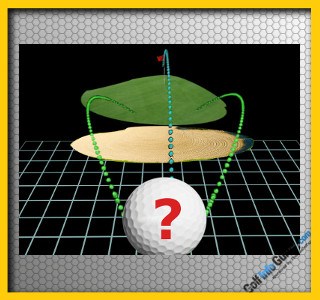- Is it always best to layup off the tee? One of the misconceptions that many golfers have about the topic of course management is they think that smart decision making is all about laying up at every turn. That simply isn’t the case. There are plenty of times when it is appropriate to hit your driver off the tee, or when it is a good decision to go for a par five in two shots. We aren’t going to tell you that the layup is always the right play – because it isn’t. Instead, the goal here is to make the right decision for your game, based on the situation. For instance, if you have a wide-open par five fairway in front of you, feel free to swing away with your driver. On the other hand, a narrow, short par four is probably a better time to put away your driver and opt for a hybrid or fairway wood for the job of handling the tee shot.
- Isn’t it always good to get as close to the hole as possible? Absolutely not. Golf is a game of positioning, and playing farther away from the hole may be your best bet, in some cases. To highlight this concept, let’s picture a green which is sloped severely down from left to right. The hole is cut on the high side of the green, near the left edge. As you hit your approach shot, where should you aim? If you are an aggressive player, you may aim right at the hole. Unfortunately, this is a rather risky strategy, as missing just slightly to the left could cause you to face a difficult, downhill chip from the short side. In this case, a smart course management decision would be to play to the right side of the green. This will help you to avoid a difficult situation where your ball is above the hole and you may not be able to stop it anywhere near the cup with your next shot. Playing out to the right will leave you with an uphill putt or chip, and you will be much more likely to get down in two and secure your par. You can use this kind of thinking all around the course while planning your shots. It isn’t always best to fire directly at the hole location – sometimes, it is smart to play away in order to set up a good angle with your next stroke.
- Should bunkers always be avoided? Most of the time, you’ll want to keep your golf ball safely away from the sand traps that dot the layout of your favorite course. With that said, it might make sense on occasion to intentionally play the ball into the bunker. This is especially true when playing a course with deep rough around the greens. Let’s say you are going for the green in two on a par five. While you can’t quite reach the putting surface, you do have enough power to get close and set up a chip shot. Instead of hitting into the long rough, consider aiming for a greenside bunker. From there, you should have a good chance to get up and down with an explosion shot and a good putt. In most cases, playing from a greenside bunker will be easier than facing a difficult chip from long rough. It won’t be often that you’ll want to aim for a bunker, but this is a strategy to keep in the back of your mind for certain circumstances.
- Is it always a mistake to leave a putt short? There is a good chance that you have been teased once or twice over the years after leaving a putt short. Someone in your group probably said, ‘never up never in’, meaning you didn’t give your putt a chance to go in because you left it short of the hole. While this kind of good-natured teasing is just part of the game, it’s important to not take it too seriously. Leaving a putt short can actually be smart course management strategy in certain situations. If you have a long putt from the back of the green to a hole cut near the front of the green, and the front of the putting surface slopes down back to the fairway, you will want to leave the putt a little short for safety. If you send this kind of putt too aggressively toward the front of the green, the ball may speed past the cup and off the green entirely. So, while you never want to leave an uphill five-footer short, there are times when the best course of action is to keep your putt short for safety.
For the average golfer, course management is something of an afterthought, at best. The typical amateur player thinks more about topics like equipment and swing technique than course management, and that is a shame. Until you understand the extreme importance of course management, it is going to be hard to play up to your abilities in this game. Making the right decisions as you move around the course is crucial to your success, yet many players never give this subject a second thought.
If you are even thinking about course management at all, you are already ahead of the game. We hope the answers we’ve provided to some of the questions below will help enhance your understanding of this topic.




As you gain experience as a golfer, you are likely to develop your own unique course management strategy. The strategy you use should be based on both your personality and your skills as a golfer. For instance, if you like to be aggressive, and you happen to be accurate with your driver, feel free to hit the driver regularly from the tee. On the other hand, a conservative person with a wayward driver will benefit from using plenty of layups. There is no one right way to manage your way around the course. By catering your plan to your own needs and abilities, you can improve your scores over the long run.





